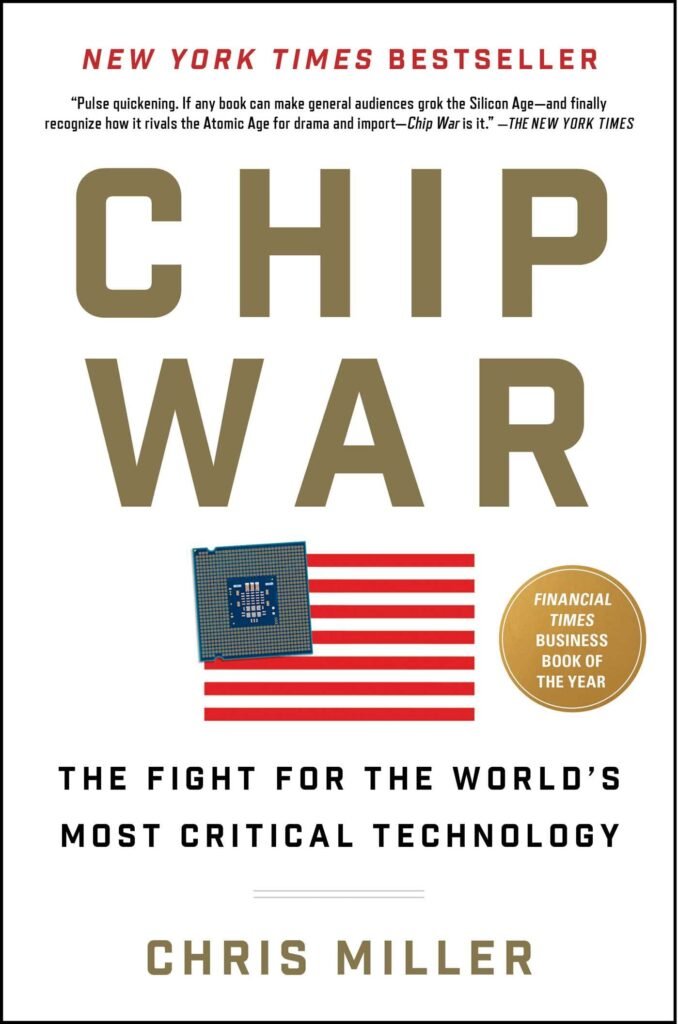|
Listen to article
Getting your Trinity Audio player ready...
|

Why are America and China lunging over Taiwan? Why are they threatening each other with war over that country? Among several answers is a company called TSMC – Taiwan Semiconductor Manufacturing Corporation. This Hsinchu based semiconductor manufacturing company is an asset for Taiwan and an eyesore for China. With more than 60% share in the cutting edge semiconductor foundry market, TSMC is way ahead of any rivals including South Korea’s Samsung, which has around 15% market share.
With the world turning high-tech in the 21st century, both America and China, and for that matter the entire world, know that “from machine learning to missile systems, from automated vehicles to armed drones” – everything requires cutting-edge semiconductor chips. Control over Taiwan means control over this scarce resource, which only a handful of companies have competence to manufacture.
Chris Miller, an Assistant Professor at the Fletcher School at Tufts University in the US, traces the origins and architecture of this new quiet war in his book, “Chip War – The Fight for the World’s Most Critical Technology”.
Semiconductor chips are the most traded products in the world today. A digital watch carries dozens of them. A modern car carries hundreds of them. An aeroplane is practically controlled by thousands of semiconductor chips. They are its brains. An Apple I-phone contains approximately one to two billion transistors on dozens of chips.
“Last year, the chip industry produced more transistors than the combined quantity of all goods produced by all other companies, in all other industries, in all human history”, writes Miller.
In the digital age, we often hear that data is the new oil. But Miller contends that it is not data but the processing power that is the real challenge to acquire. Semiconductor chips are the key to the processing power and they are controlled by a handful of companies in the world.
“A typical chip might be designed with blueprints from the Japanese-owned, UK-based company called Arm, by a team of engineers in California and Israel, using design software from the United States. When a design is complete, it’s sent to a facility in Taiwan, which buys ultra-pure silicon wafers and specialized gases from Japan. The design is carved into silicon using some of the world’s most precise machinery, which can etch, deposit, and measure layers of materials a few atoms thick. These tools are produced primarily by five companies, one Dutch, one Japanese, and three Californian, without which advanced chips are basically impossible to make. Then the chip is packaged and tested, often in Southeast Asia, before being sent to China for assembly into a phone or computer”, writes Miller describing the value chain of the semiconductor industry.
Sadly, India is very small in this supply chain today. If the OPEC – Organisation of the Petroleum Exporting Countries boasts of control over 40% of world oil production, Taiwan alone controls almost 44% of processing power in the world.
The battle for control over this critical technology began about six decades ago. It became a Cold War competition between the US and the USSR during the 1970s and 80s. The Soviets could never progress in the field before their collapse.
Where the Soviets failed, the Japanese succeeded. Miller recounts an anecdote when Japanese prime minister Hayato Ikeda met French president Charles de Gaulle in November 1962. “He brought a small gift for his host: a Sony transistor radio. Japan was nothing but an economic power, de Gaulle declared, huffing to an aide after the meeting that Ikeda behaved like a ‘transistor salesman’. But it wouldn’t be long before all the world was looking enviously at Japan, because the country’s success in selling semiconductors would make it far wealthier and more powerful than de Gaulle ever imagined”, the author writes.
However, it was Taiwan which became the real winner in this race for semiconductor fabrication. The autocratic leadership of Chiang Kai-shek joined hands with chip designers in Texas and California to produce chips with the help of Chinese labour. That’s how the first major foundry, TSMC, was born in Taiwan. In the last more than four decades it never loosened its grip over this critical technology.
Intel and Texas Instruments – two American companies dominated the chip industry in the initial decades. Both have been the clients of TSMC for fabrication of chips. Today, the third memory chip leader, Micron, is coming to India. Jack Simplot, its owner, was originally producing potato chips in America. As the chip industry grew, Simplot entered the business in early 2000s with heavy investment and emerged as a leader in less than two decades.
One company in Asia that gave competition to TSMC was Samsung in South Korea. Interestingly enough, like Jack Simplot, Lee Byung-chul, the founder of Samsung too was a vendor of dried fish and vegetables. “Korea was an impoverished backwater, with no industry or technology, but Lee was already dreaming of building a business that would be ‘Big, strong, and eternal’, he declared. He would turn Samsung into a semiconductor superpower thanks to two influential allies: America’s chip industry and the South Korean state”, Miller writes.
Mao’s China wanted to master the transistor making industry. But Mao saw an enemy of Socialism in any foreign electronics and insisted that they shouldn’t be allowed inside China. Maoists exhorted the country’s workers that “all people must make semiconductors”, as if every member of the proletariat could forge chips at home.
Naturally, it was disastrous. “Out of every 1,000 semiconductors we produce, only one is up to standard,” Miller quotes one party leader complaining in 1975. “So much is being wasted.”
After Mao’s death, Deng tried to revive the industry with the goal of mastering the critical technology of chip making without relying on foreigners. The Guangming Ribao newspaper in 1985 voiced a call to abandon “the formula of the first machine imported, the second machine imported, and the third machine imported” and replace it with “the first machine imported, the second made in China, and the third machine exported.”
“China’s problem isn’t only in chip fabrication. In nearly every step of the process of producing semiconductors, China is staggeringly dependent on foreign technology, almost all of which is controlled by China’s geopolitical rivals – Taiwan, Japan, South Korea, or the United States”, Miller states.
Xi Jinping is not prepared to accept this situation where inimical foreigners build a cartel to deny his country access to the most critical modern technology. “Compose shock brigades and special forces to storm the passes”, he gave a clarion call. China’s government set out a plan called Made in China 2025, which envisioned reducing China’s import share of its chip production from 85 percent in 2015 to 30 percent by 2025. That is where Taiwan and TSMC become crucial. Chinese government analysts have publicly argued that if tensions between the US and China intensify, “we must seize TSMC”.
Miller cautions that “Taiwan is within range of far more destructive Chinese forces – not only an array of short- and medium-range missiles but also aircraft from the Longtian and Huian airbases on the Chinese side of the Strait, from which it’s only a seven-minute flight to Taiwan”.
It is not a standoff over an “impoverished island”, but the battleground over the “beating heart of the digital world”.
Chris Miller’s book, Chip wars, is a must-read to understand where the new oil of the 21st century digital world is located, and an unseen war that is raging over its control.






Abstracts of Scientific publication conveys 80% of facts. Here reviewer looks original contributor.
Wonderful book review by a real Thinker and political ideologue.
In this Technology era it’s Chip which will control the economies,that is what happening between US and China over Taiwan.
Very comprehensive book review.